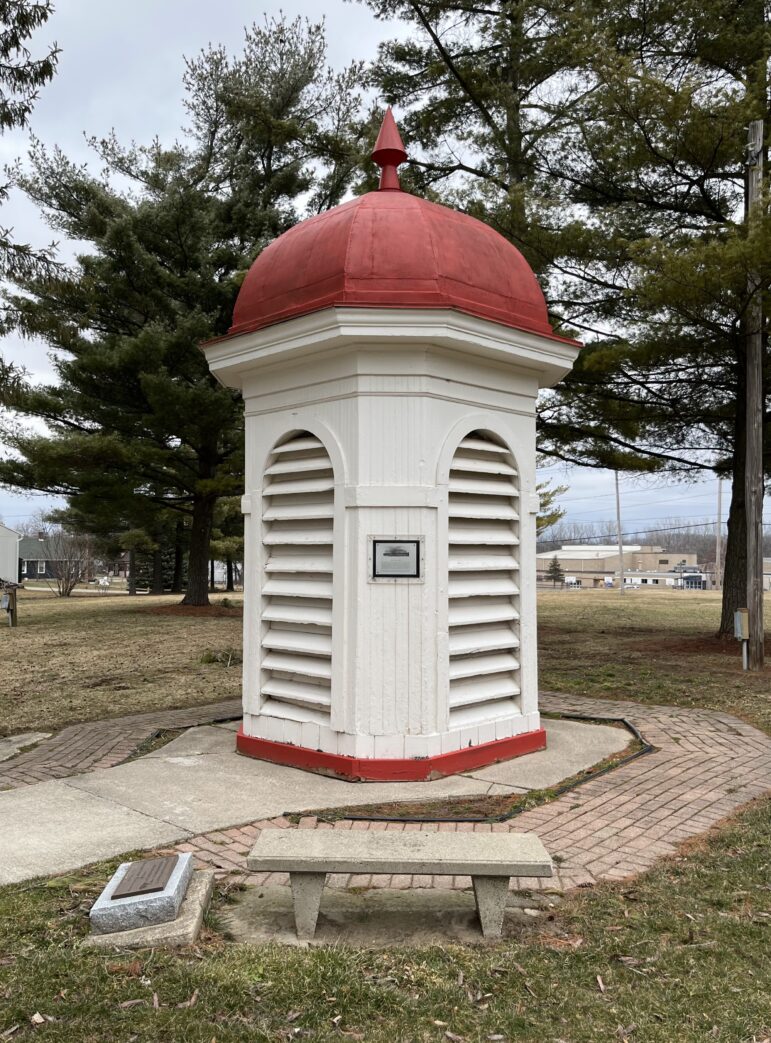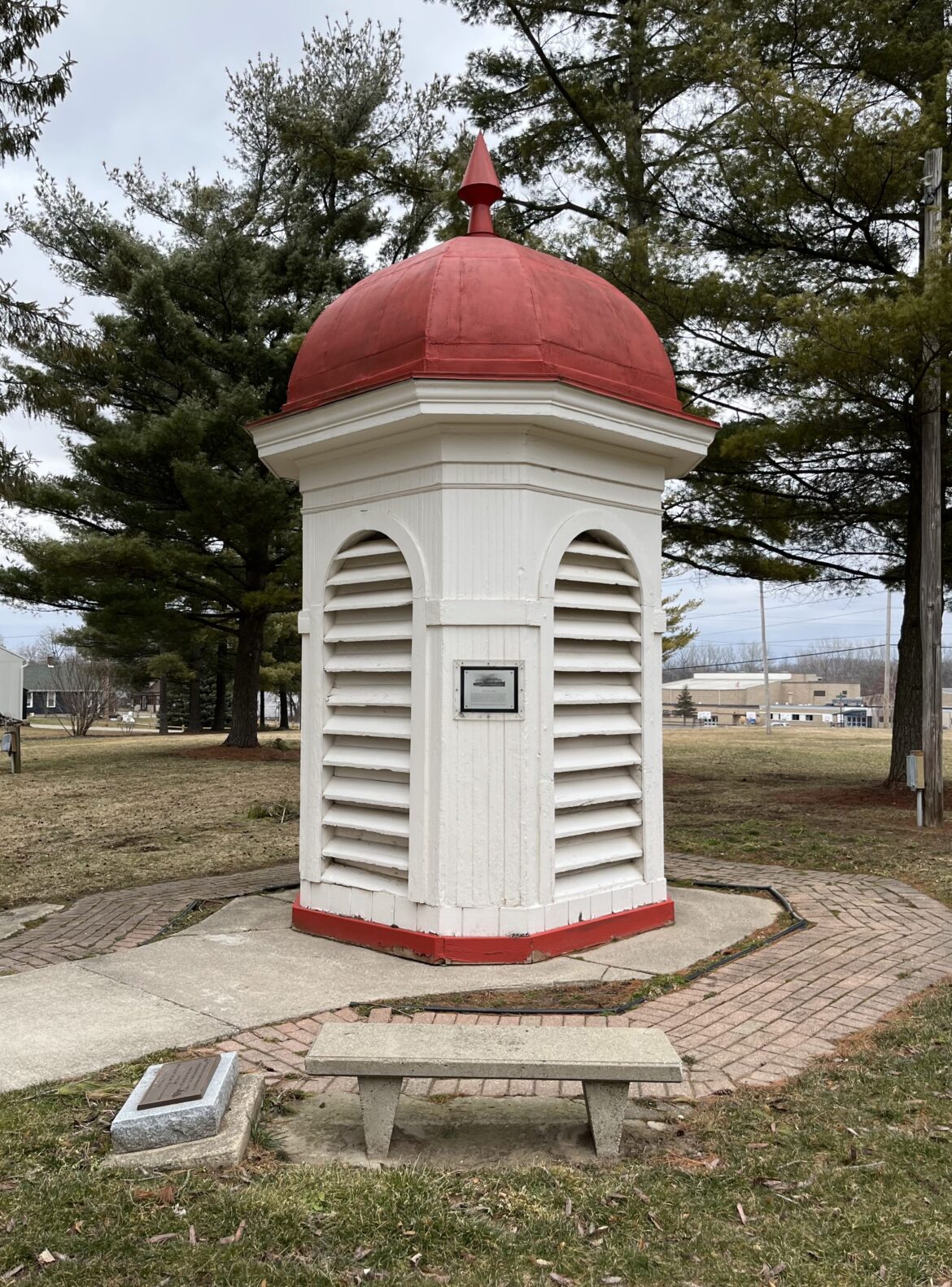
On May 18, 1927, the deadliest attack on a school in the U.S. occurred in Bath Township. A series of explosions at the Bath Consolidated School killed 38 elementary children and four adults, injuring 58 others.
Now, 96 years later, residents are working to keep the memory of the victims alive through a new Bath School Museum.
The current Bath School Museum is in the middle school auditorium lobby, and it contains a collection of Bath school memorabilia from more than a century ago. The Bath School Museum Committee has proposed construction of a museum which will be more accessible and larger. It will also provide a space for the last remaining part of the original school: the cupola.
The cupola was built with the original school in 1922, and survived the explosions. But in 1975, the school was torn down because it was in poor condition. Since then, the grounds of the former school were turned into the James Couzens Memorial Park. The cupola was put on display in the park alongside the memorial and marker commemorating the Bath School Disaster.
Because it has been outdoors for more than a century, the committee decided to move it inside to prevent deterioration. So, the idea for the new museum was born with the cupola as its centerpiece.
The cupola will not have to move far, though, since the committee plans to have the museum built on the edge of the park grounds. According to Committee Member Chris Hagerman, the community has shown support for building the museum on this land.
“That’s where the disaster happened, and it’s only fitting to bring it back there,” Hagerman said. “Some of the older folks whose families have had either someone who was killed or survived the disaster always wanted a memorial in that park, more than just the cupola … Almost everybody who’s talked to us has said how much they’d appreciate having a museum in the park.”
The museum will cover all of Bath school history, but it will emphasize the disaster and its effects, which are felt by Bath residents today. Hagerman’s maternal grandfather survived the attack as a child. His mother, Susan Hagerman, is president of the committee.
Susan Hagerman recalls growing up knowing something happened, but her dad never talked about it. Because he was buried alive in the explosion, loud noises upset him. When the disaster was brought up, he would cry. His sisters had similar reactions.
“Back then, nobody talked about what happened,” Susan Hagerman said. “Back then, they didn’t have support groups. They didn’t have counselors. Everybody kept everything to themselves. So for the most part, everybody — survivors, family members — they knew what happened, but nobody really talked about it.”
But this changed in the 1970s when the principal gave a presentation about the explosion for the 50th anniversary. The presentation included photos from the disaster.
“I sat there and watched that with my dad, and it was just like I was right there with them,” Susan Hagerman said. “It was just mind blowing. But after that point, it seemed like the survivors started opening up more.”
As more people started talking about their experiences, the event’s effect on the community became evident. Susan Hagerman said the community always had a rural, small-town environment which fostered co-dependence. Right after the disaster, people grew even closer. However, she said they were forced to move on quickly.
“After the explosion, there wasn’t a lot of time to grieve because they still had to feed their family,” she said. “They still had to take care of their farms, and take care of animals, besides burying their children. Everybody just pulled together; people that lost children in the explosion went to funerals of their friends that lost children in the explosion.”
According to Susan Hagerman, Bath is still a tight-knit and supportive community. And as the community has grown more comfortable discussing the tragedy, they have developed the understanding that it must be talked about. She said the new museum will continue to recognize the event and memorialize the victims.
“It was horrific, but it’s part of our past,” Susan Hagerman said. “It’s part of our history, and it’s very important to keep our history alive … It’s important to let younger people know about it because it’s part of our history. There’s still many survivor families in the community. Not only the explosion — it’s important for them to know the history of our school because that’s part of our past too. That’s why it’s important, and I think it helps to keep us strong and pulled together.”
To make this project possible, the committee must finalize plans and begin fundraising. They hosted a community discussion to receive input and have gotten the go-ahead from the board of education, which owns the park, and the township, which maintains it . The township also gave the committee money to hire an architect. Members selected THA Architects Engineers.
Chris Hagerman said there’s plenty of fundraising to do, but he’s confident the community will support the endeavor. According to Committee Member Kate Hagerman, who is married to Chris Hagerman, the community response has been overwhelmingly positive. Kate Hagerman said the committee also plans to pursue grants and endowments.
The committee hopes it will receive enough funds for the museum to be a community center. This might include a venue or event space, especially for class reunions. Members also hope the museum will be a dynamic space that people can visit several times and an educational space for class visits.
By creating the museum and community space, the committee hopes Bath residents can tell their stories and continue to lean on each other. Kate Hagerman said the committee hopes to have the museum completed by the 100th anniversary of the disaster in 2027.
“I think almost all of us have lived in Bath for the majority of our lives or went to school here,” she said. “We’re all really invested and connected. Many of the people in the committee have had family members who were part of the Bath School Disaster, so it’s really close to all of our hearts, to make sure that this story is told in the right way going forward. And I think we’re just thankful for all the help that we can get.”
